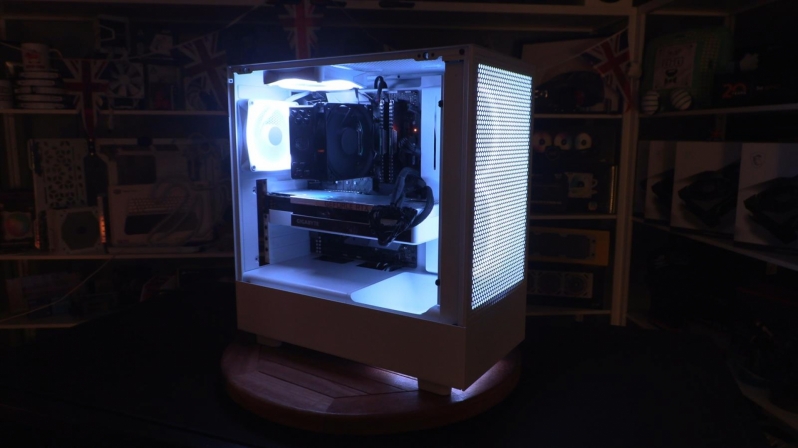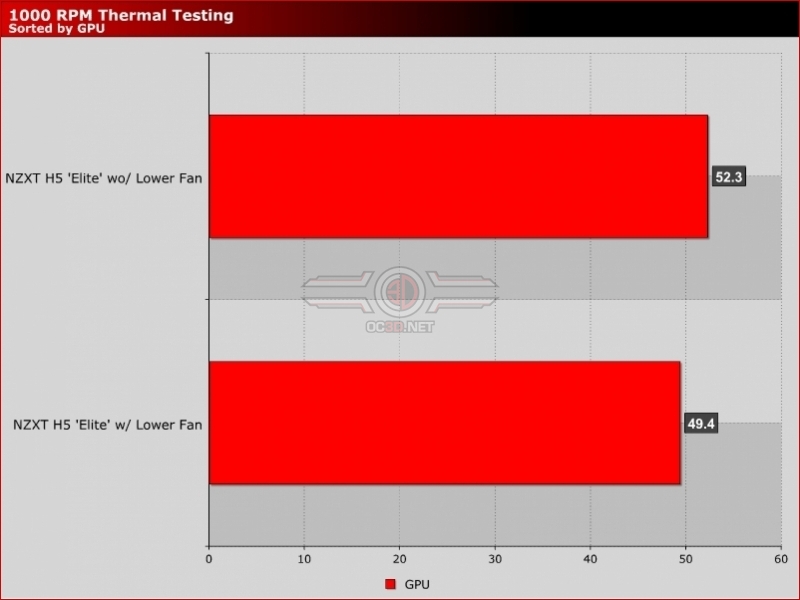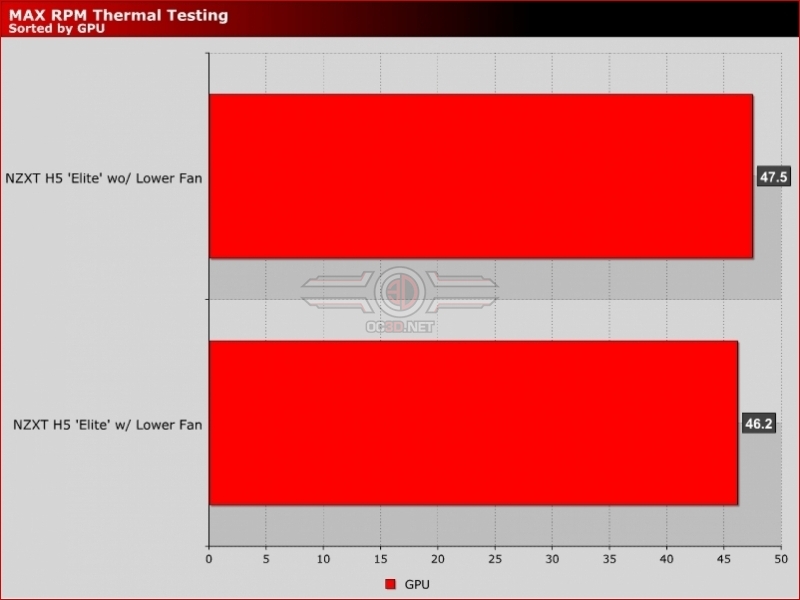We built an NZXT H5 Flow Elite – Revisiting NZXT’s H5 Flow
Testing NZXT’s H5 with a modern graphics card
One of the comments that we recieved from NZXT about their H5 series of cases is that their bottom fan design is intended to benefit users of modern air-through graphics card designs, like Nvidia’s recent RTX Founders Edition designs and most other modern high-end graphics cards. Since we typically test cases with a blower-style graphics card, we wondered if a larger thermal delta could be seen with a more modern graphics card when enabling and disabling our H5 Elite Flow’s bottom fan. This is why most of the images below showcase our custom H5 Elite Flow with a Gigabyte RTX 3080 instead of our trusty GTX 980.
1000 RPM
Below we can see that disabling our H5 Elite’s lower ‘toilet’ fan lowers thermals by almost three degrees, a result that is a little worse than what we saw with our GTX 980 GPU. I guess this case’s bottom fan does work well with blower-fan GPUs, at least when combined with front mounted fans.
Maxed Case Fan Speeds
Once again, when we max out the RPMs of our H5 Elite Flow’s case fans, we see that the H5 Elite Flow’s bottom fan now has a lower impact on GPU thermals. That said, we do see a 1.3 degree drop in GPU temperatures, which is more than what we saw with our GTX 980. It is clear that the thermal impact of NZXT’s bottom fan can differ on a GPU-by-GPU basis, and has a larger impact when lower case fan RPMs are used.






